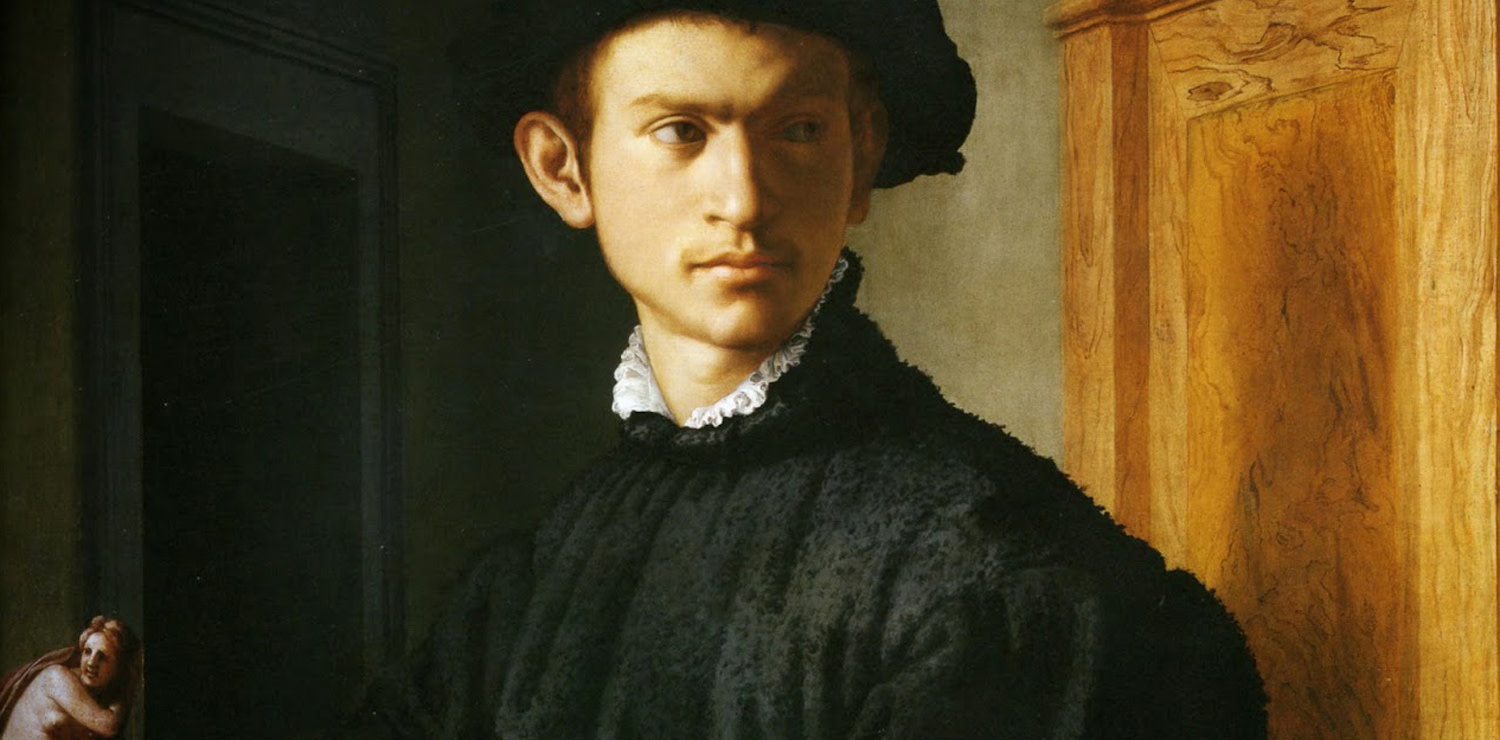A tour of masculine elegance
A riot of male beauty told through extraordinary works of art
Florence is a city of art and culture, but also a city of elegance and fashion. The fact that Florence has a special relationship with beauty is well-known to the world, but many factors bear witness to the fact that this relationship with elegance is not only linked to the female universe.
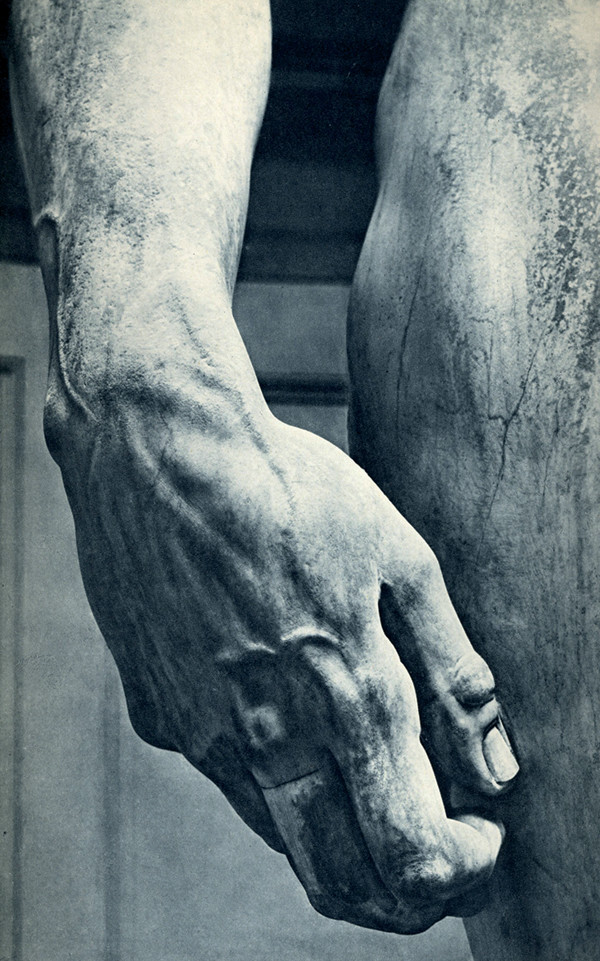 A Michelangelo's David portrait
A Michelangelo's David portrait In addition to the great kermesse of Pitti Uomo, a global benchmark for fashion, the city preserves numerous works of art with male subjects: figures from politics or mythology, these are men who made Western figurative history, such as Michelangelo’s David, the Perseus by Benvenuto Cellini, or Hercules and Cacus by Baccio Bandinelli.
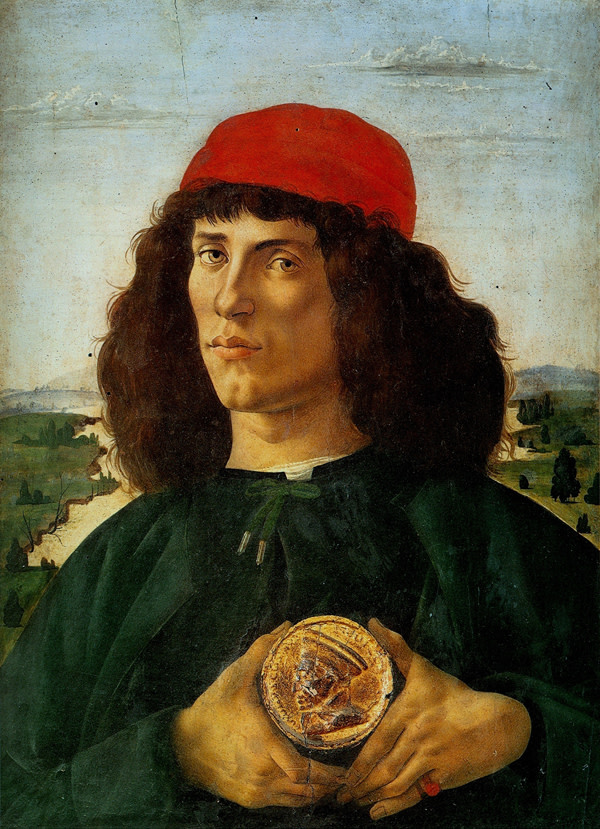 Sandro Botticelli, Il Ritratto di giovane con la medaglia
Sandro Botticelli, Il Ritratto di giovane con la medagliaThe Florentine galleries also preserve a considerable number of male portraits where you can find not only important political and social figures but also style, clothing and elegance. Starting from this premise, we have “chosen” from the many masterpieces in Florentine museums a selection of portraits that are evidence of a hedonistic universe. Our tour can do no less that start with the artist who more than anyone else, made beauty an ideal, his raison d’etre: Sandro Botticelli. The Portrait of a Young man with Medallion, preserved in the Uffizi and dated from around the 1470s probably depicts Botticelli’s brother, or a young man close to the Medici family. The boy with the enigmatic gaze holds a medallion, which bears the profile of Cosimo the Elder, Pater Patriae the first de facto lord of Florence. The youth, with fine features and pale eyes is shown at three-quarter length, with long hair, typical of the time, and wearing a red hat, a dark coat and a ring on the little finger of the left hand set with a large red stone.
The other portrait, again by Botticelli, is Portrait of a Youth dated to 1470 and stored in the Galleria Palatina. The work, which has been in this museum since 1829, is one of the first portraits where the subject is depicted in three-quarter length, according to a tradition derived from the Flemish painting in Italy that began to replace the humanistic profile portrait of the later 15th century. The young boy portrayed in three quarter length and turned to the left, is wearing a red cape suitable for the wealthy bourgeois classes and a chaperon, a typical cloth headpiece that hangs to his shoulders. The effigy is both concise and celebratory, with a subtle psychological tension provided by the direct gaze toward the viewer. The view from slightly below gives the subject an aristocratic tone.
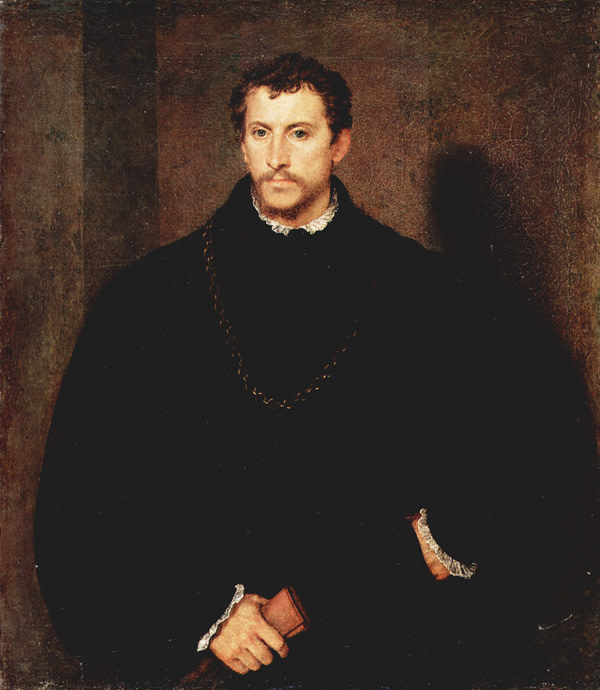 Tiziano, Il giovane inglese
Tiziano, Il giovane ingleseThe Galleria Palatina also preserves something that, in my opinion, is one of the most beautiful portraits ever painted by Titian: the Portrait of a Young Man with Grey Eyes (Portrait of an Englishman), dated to around 1525. The painting, which belonged to the Della Rovere family, came from Urbino along with other works by Titian. For a long time, the subject in the portrait was identified as Howard, Duke of Norfolk. Later, when the identification was no longer certain, the title was changed to “Portrait of a Young Man with Grey Eyes”. The man, with pale and melancholy eyes, turns his gaze toward an undefined point. He has short hair and a wavy red beard, austere clothing but lightened by a pale shirt with embossed neck and wrists, wearing a heavy metal necklace and holding in his right hand a pair of gloves while resting his arm on his left side.
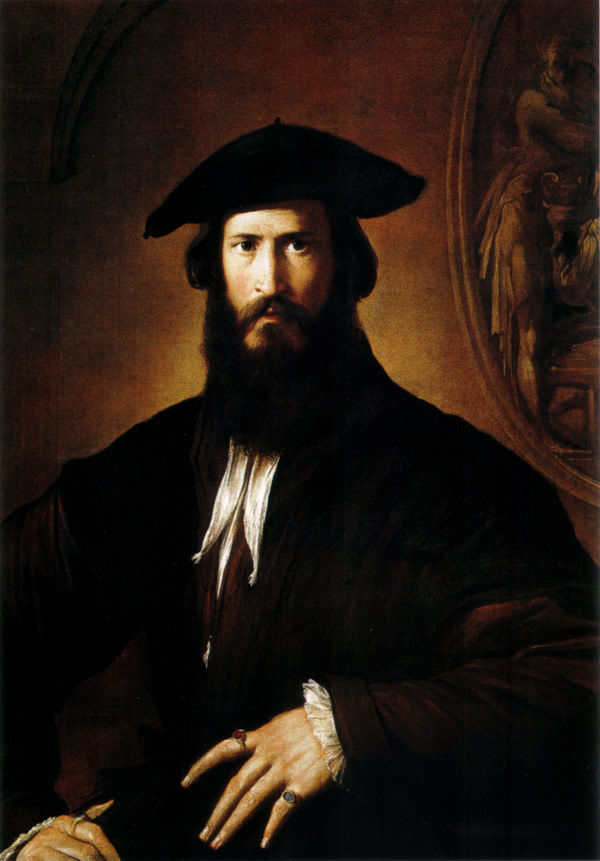 Parmigianino, Ritratto virile
Parmigianino, Ritratto virile Another work of astonishing beauty, is the Portrait of a Bearded Man by Parmigianino, dated to about 1530 and preserved in the Uffizi since 1682. Originally considered a self-portrait, it might depict Bonifacio Gozzadino or a Bolognese count. The man portrayed at half-length, in a dark room, shows the expressive ringed hand well. He wears a black jacket open at the chest, the same colour hat, according to men’s fashion as a gentleman of the time, from which protrude the edges of the collar of his white shirt. He has long hair in a helmet shape, a thick dark beard and looks intensely at the viewer with a proud and serious expression, inspiring nobility and values.
From another area is the refined Portrait of an Unknown Eighteen-year-old by Georg Pencz, German painter and engraver. The work, which arrived at the Uffizi in 1773, depicts a young man dressed in traditional gentleman’s attire of the time, a red bodice buttoned to the waist, and also wearing a bag containing his genitals, called a codpiece. Coming into fashion in the high renaissance, this “unusual” accessory was often padded artfully and sometimes used as a pocket and was a clear “sign” of virility and power.
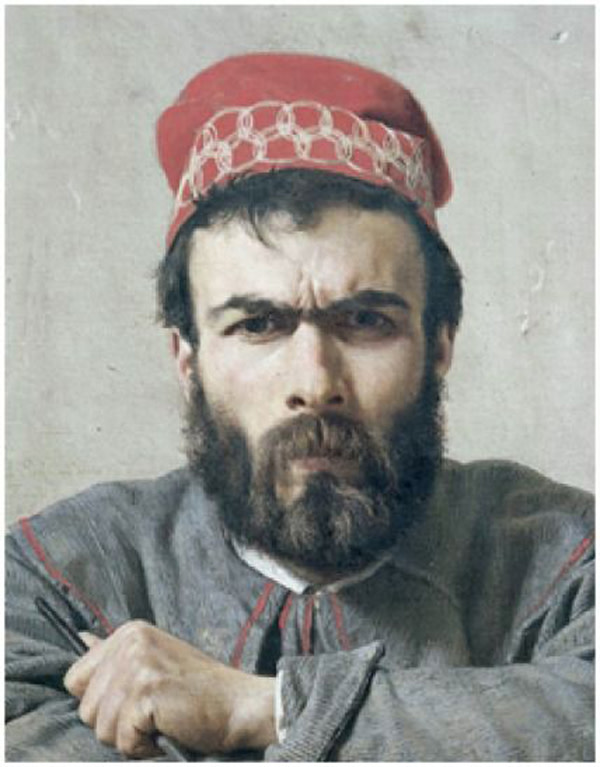 Raffaello Sorbi, Ritratto dello scultore Emilio Zocchi
Raffaello Sorbi, Ritratto dello scultore Emilio Zocchi We’d like to end our tour with a work kept in the Modern Art Gallery of Palazzo Pitti: the Portrait of the Sculptor Emilio Zocchi by Raffaello Sorbi, a powerful, frontal and direct depiction of the Tuscan sculptor. The expression is a frown, with a burning gaze and closed mouth. The folded arms and clenched fist that holds the chisel as a weapon, transmit the overwhelming force of the young man who, with the red hat adorned with white circles and the grey coat, gives a sense of extravagance and rebellion in an era of bourgeois formalism. A young alternative and unconventional dandy like many of the whimsical characters you meet during the Pitti event in Florence, giving colour to the usual forms and traditions.






